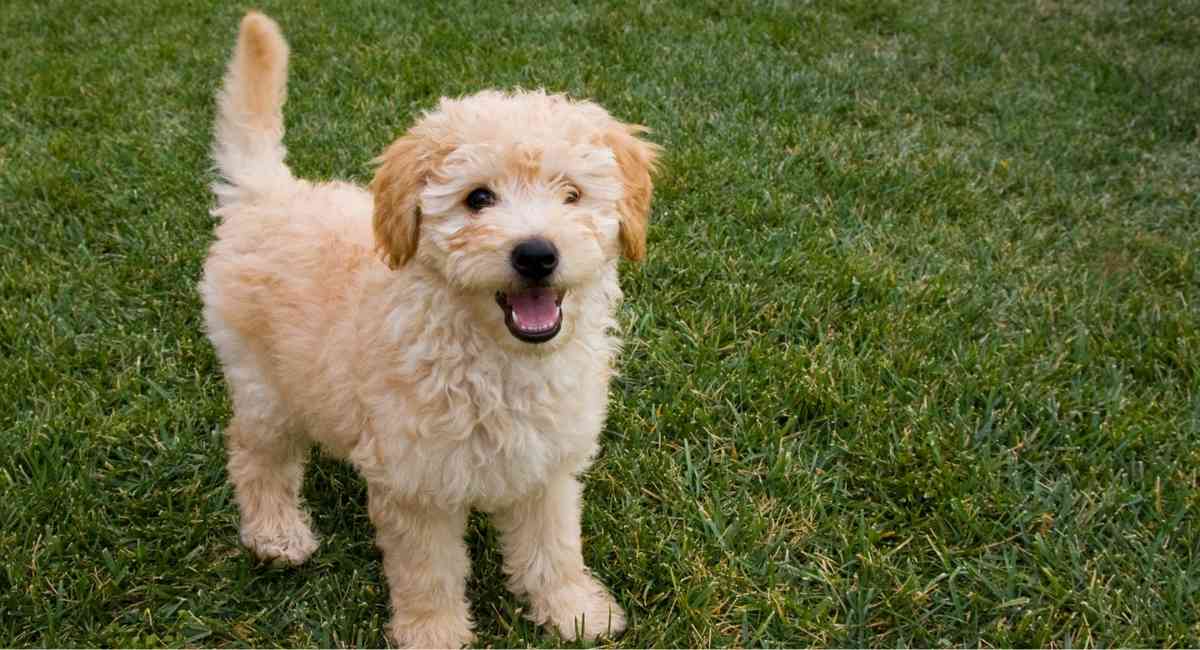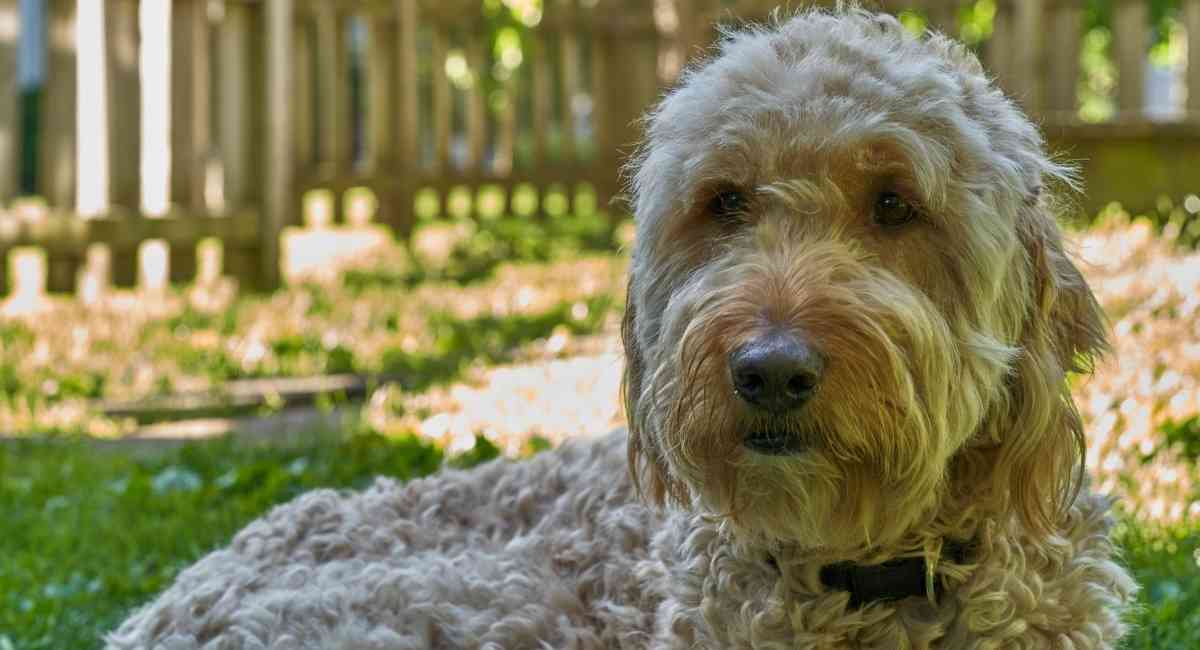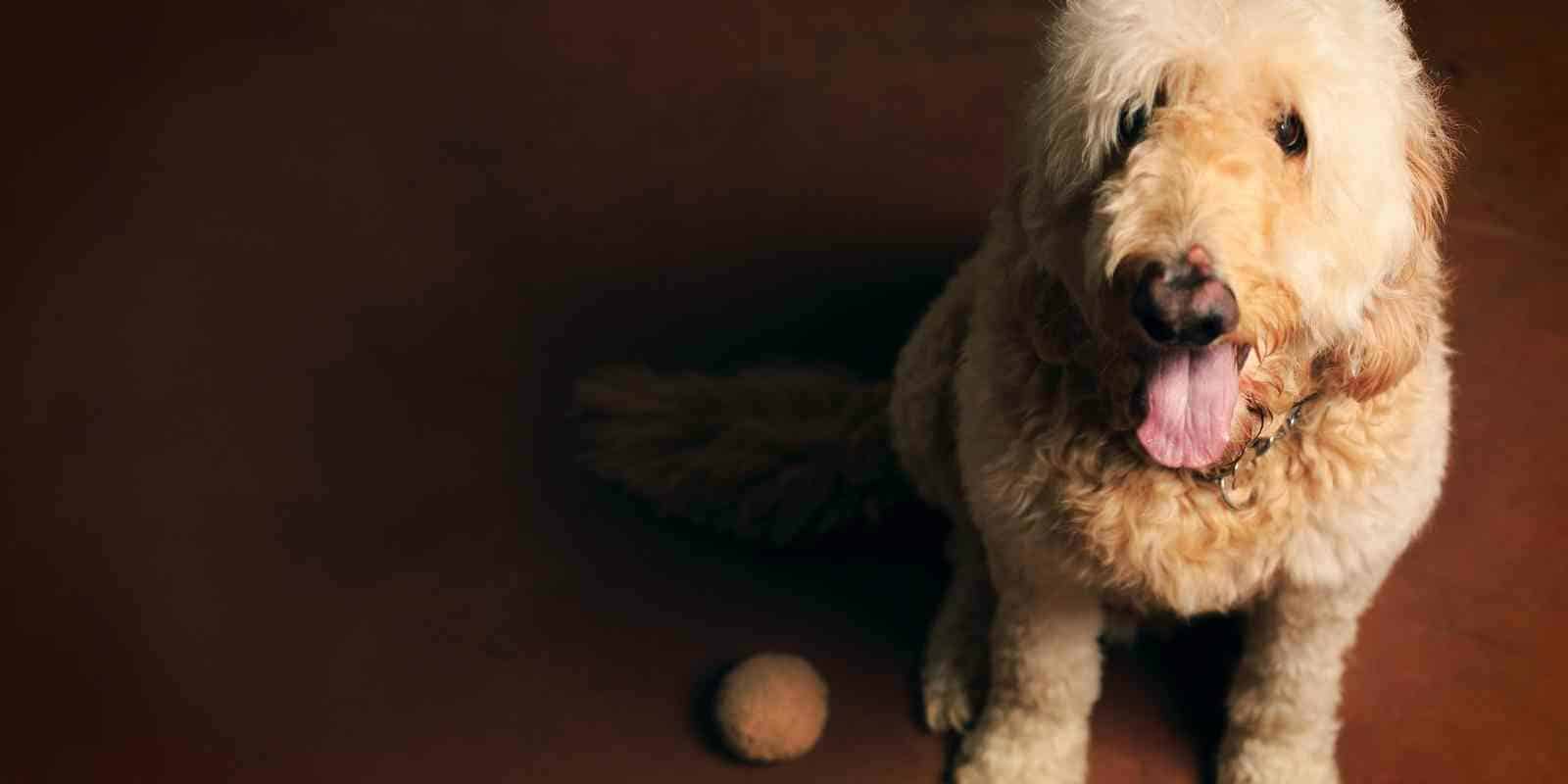Many doodle dogs are commonly referred to as hypoallergenic, but are they really? What does hypoallergenic even mean? And is your Goldendoodle hypoallergenic? This article will answer all of these questions for you.
Goldendoodles originated from Australia and are a crossbreed between a Golden Retriever and a Poodle, sometimes referred to as Groodles. They are a designer breed because, unlike a “mixed breed” (unknown parentage), they are born from two purebred parents. They are also referred to as hybrid dogs.
These dogs are known to be intelligent, cheerful, and good with people. They are very gentle with kids, making them a favorite for families. While these are all great characteristics, many people are attracted to this variety of dog primarily because it is believed to be hypoallergenic.
What Is Hypoallergenic?
Hypoallergenic is a term used to refer to something that causes fewer allergic reactions. Silk, cotton, bamboo, etc., are examples of hypoallergenic materials.
Dogs that are said to be hypoallergenic are not likely to trigger an allergic reaction in a person. When people choose hypoallergenic dogs, they tend to avoid heavy shedders because they think it’s the fur or hair itself that they’re allergic to. In fact, it’s the dander – dead skin cells – that typically results in canine allergies. Proteins present in the dog’s saliva can also trigger allergies.

Is a Goldendoodle Hypoallergenic?
The answer to the question is pretty easy. Yes, Doodles are hypoallergenic dogs. However, we want to clarify that no dog is truly 100% non-allergenic. They are called hypoallergenic because the amount of dead skin and dander they produce is less, thereby reducing the risk of an allergic reaction.
Since Goldendoodles are a crossbreed between Poodles and Golden Retrievers, the chances of one being hypoallergenic are determined by the generation and genes. Poodles are said to be hypoallergenic and light shedders, so if a puppy Doodle inherits more of this gene, he’d be highly hypoallergenic, but the opposite is said for a puppy who receives more of the Golden Retriever gene.
Although there isn’t proof, a Doodle with a curlier or wavier coat is less likely to shed and cause allergies. A way to determine this is by knowing the different generations of Goldendoodles.
Generations of Goldendoodles
Before we dive into the generations of Goldendoodles, you must understand certain terminologies, so you don’t get confused when you come across F, F1, etc.
- The letter “F” is used to refer to a “Filial hybrid,” which basically means that it is a hybrid dog from two purebred dogs. This letter is always used to start the labeling of the Goldendoodle generation.
- In some labeling, the letter “B” is found at the end of very specific generations. This means that the Goldendoodle generation was bred back to a purebred Poodle. There are certain uncommon instances where some are bred back to a purebred Golden Retriever.
- If you come across “BB,” this means the Goldendoodle had been backcrossed twice with a Poodle.
- The number specifies what the generation is. That is, the number one would represent the first generation, two the second generation, and so on.
F1 Goldendoodles
This is a first-generation Poodle that arose from the breeding of a Poodle with a Golden Retriever. They are first-generation hybrids with a lesser health risk because of the mixture of several genes, unlike their purebred counterparts.
Their shedding varies from light to heavy. Types of coats vary from curly, wavy, and straight coats. These dogs require regular brushing as well as weekly grooming. You may need to have the coat lowered every month to keep them looking sharp.
This generation of Goldendoodle is not suitable for owners with severe allergies, but people with mild allergic reactions may benefit from this type of breed over others.
F2 Goldendoodles
The breeding of two F1 Goldendoodles will result in this generation. When it comes to shedding, there is a high chance that the Retriever genes will become dominant in a Goldendoodle puppy, thereby leading to heavy shedding. When crossing two Goldendoodles, you can either end up with a puppy with mostly Poodle characteristics or a Golden Retriever, depending on how the genetics work.
As a result of a high chance of shedding, this breed is not advised for people with allergies. Most pet owners will want to have genetic testing or coat testing to further confirm if there is a chance they could own one.
These Goldendoodles can have straight, curly, or wavy coats, and grooming is dependent on the generic mix of the puppy.
F1B Goldendoodles
This stands for first-generation backcross, and these are Goldendoodles that have been bred back to a purebred Golden Retriever or Poodle. The traits of either breed are highly increased in this situation, and most breeders take advantage of this by crossing a Doodle back to a Poodle in the hopes of reducing shedding.
Shedding is highly dependent on the F1 parent, and it can vary from high to low. Their coats, just like their parents, can either be straight, curly, or wavy. They need average to high grooming.
There’s a 50-50 chance of the puppies being hypoallergenic. The breeder can test the coat just a few weeks after birth to determine this. The puppies may inherit 75% of Poodle and 25% of Golden Retriever genes.
F1BB Goldendoodles
When an F1B Doodle is bred with a Poodle, the F1BB generation arises. This is the most hypoallergenic of all the generations of Goldendoodles, and they are 87.5% Poodle and 12.5% Golden Retriever.
This is one of the most popular generations because of its hypoallergenic tendency and less shedding. They are a great pair for families with severe allergies and those who do not like hair and fur around their homes.
Their coats are loose and wavy, sometimes curly. In most cases, straight coats are hard to come by.
F2B Goldendoodles
This second-generation backcross comes from crossing F1 Doodles with an F1B Doodle. Testing the genes for health issues is essential in this case. Shedding is again dependent on what gene of the parents the puppy carries, and grooming should be based according to this. The puppy coat can either be wavy, curly, or straight.
It’s important to have the coat of the F2B Poodle tested before you decide to take them home to check if they are hypoallergenic. The litter may inherit 62% of Poodle genes and 37.5% of Golden Retriever genes.
F2BB Goldendoodles
This offspring is produced by backcrossing an F2 Goldendoodle generation to a purebred Poodle twice. This is the closest to a Poodle in the second generation and is the most hypoallergenic.
They are light shedders and require regular brushing and grooming to prevent mats. Their coats are wavy and curly. This generation of Goldendoodles is sometimes referred to as multi-gen.
They have 81.24% Poodle genes and 18.75% Golden Retriever genes.
F3 or Multi-Generational Goldendoodles
This generation arises from breeding two F2Bs, F1B to F2B, F2 to F2, F1B to F1B, etc. This generation, through careful breeding, can be completely rid of unwanted traits like shedding.
Multi-generational Doodles have a greater risk of inheriting diseases from the same line of breeding. Genetic testing is needed for people with mild allergies to confirm if it’s safe to take home a multi-generational Goldendoodle.
Shedding can be extremely low with this generation. They usually have a curly coat or a wavy one, as it is very rare for them to have straight coats and still be light shedders. Their grooming is usually average because of low shedding, but at the same time, it could be high depending on the puppy.
If you’re wondering about the most suitable generation you can adopt, this solely depends on your preference. If you’re looking for a Doodle, irrespective of whether it causes allergies or sheds, any generation of a Doodle that looks nice to you will do.
If you’re looking for a hypoallergenic Poodle with non-shedding characteristics, F1B, F1BB, and F2B Doodles are suitable for you.
How to Manage Allergies
- Take measures to reduce the presence of dander on your dog. This is not just useful for people with allergies. Even though the dander doesn’t trigger you, this is still an important step to follow.
- Make sure your dog goes through daily brushing to prevent dander from staying on the fur or hair.
- Clean your environment. You will need to do a lot of vacuuming and cleaning to eliminate the dander in the air from your dog.
- Bathe your dog twice a month or anytime they become dirty. When bathing Doodles, use products that remove a significant amount of dander and shed.

How to Deal With Goldendoodles Shedding
As we’ve already established, some generations of Goldendoodles shed more than others. Even if your Goldendoodle doesn’t shed often, you will still need to deal with them at some point.
Shedding could be seasonal, normal, or a result of some sort of parasite. So determining why your dog is shedding is the first step to dealing with it.
If you notice your Doodle shedding more than normal or to the point that it’s causing balding spots, it could be a result of fleas, lice, fungal or bacterial infections, etc. A trip to your vet would be necessary if this problem persists after providing solutions.
If the shedding is normal, these steps will help you deal with it.
1. Reduce Dog Stress
Yes, dogs get stressed when there’s a sudden change in their environment, a lack of physical exercise, anxiety, etc. It is important to make sure your dog is not going through any stressful situations or changes because this may result in excess shedding.
2. Bathe Them Regularly
Bathing your dog thoroughly with essential products is highly recommended. This prevents lice and fleas from being attracted to them because of dirt. You should also spray them to get rid of ticks.
3. Brush Their Hair
All generations of Goldendoodles, whether long-haired or short and curly, require daily brushing and de-shedding tools. This is to get rid of shedding hair, and if you don’t do so, it will end up being in every part of your home, which can trigger allergic reactions.
4. Feed a Proper Diet
Good nutrition is reflected by your dog’s coat, so the types of food you give them should have high nutritional value to promote a healthy coat. An omega-3 fatty acid is one great solution for de-shedding and bringing out the shine and strength in your dog’s fur.
Conclusion
Is your Goldendoodle hypoallergenic? It could be, but you’ll have to know more about your furry friend’s lineage.
These Groodles are not just popular pets for families. They are also guide dogs, companion dogs, therapy dogs, and nut-detection dogs (very useful for animal lovers with a nut allergy). They are one of the most popular crossbreeds in both the United States and Australia.
There was a high rise for Goldendoodles during the COVID-19 lockdown and even after it because of their incredible benefits. It gets even better because there is a whole range of generations to pick from.
Don’t forget to read the rest of our articles if you want to know more about caring for your Goldendoodles.

